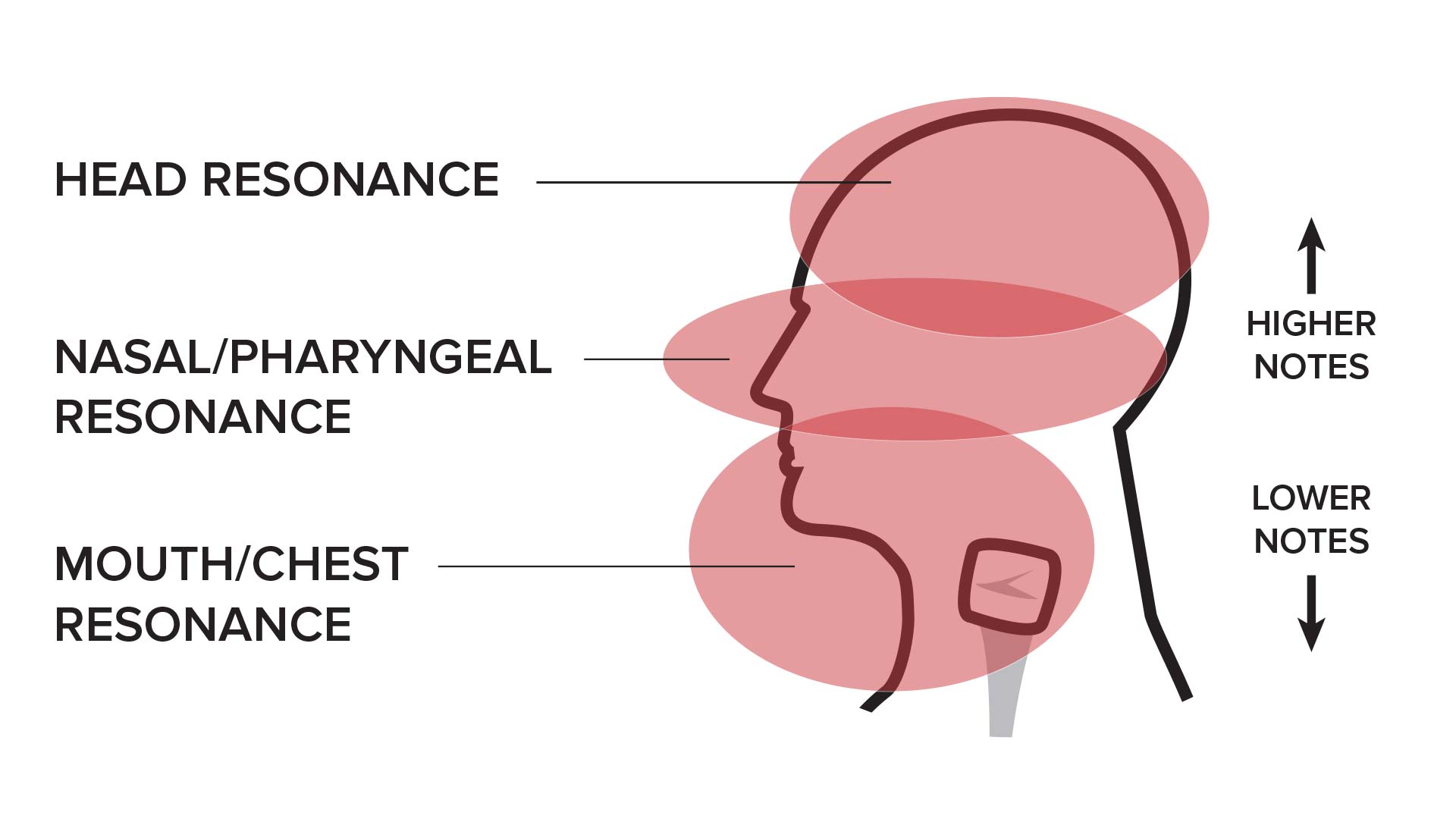The Secret to Hitting High Notes
- By Charmaine Brown
- 28 Comments
You’re singing your song, your voice is feeling great… and then… UH OH… here comes that high note, and… you freak out! Maybe you miraculously hit the note (PHEW!) or… like most of us, either your voice ends up cracking awkwardly or… you push and strain and you do hit the note, but it’s flat (and it feels terrible!).
I get it! High notes can be intimidating! Anything is scary when we don’t have the tools and techniques to go after it with!
But… high notes don’t have to be scary! You CAN hit high notes easily, but only by tackling them in a different way than you have before. We’ve all heard the definition of insanity… doing the same thing over and over and expecting different results (sounds like a great way to wear out your voice and send your confidence down the drain… so don’t do it!). Instead, I want to help you do things differently so that you can SLAY those notes and never go flat again!
In singing, your body is the instrument. Think about an acoustic guitar—the strings vibrate and they send that vibration to resonate (or in other words, buzz) in the body of that guitar. In your voice, your vocal cords are like those guitar strings. They send the vibration of air to the resonant cavities inside your face and head, just like the body of the guitar. The tone (or in other words, the sound) of our voice (and whether we’re singing on pitch or not!) is a direct result of WHERE the resonance is buzzing in the face.
Here’s the important thing to understand: certain places in your face are the most efficient resonators for certain parts of your vocal range. Higher notes need to resonate higher in your face. Lower notes need to resonate lower in your face.

The biggest reason singers aren’t able to hit high notes is because they’re trying to yell them from their mouth.
When we try to hit high notes with the air resonating lower in the face (in the mouth, or, as we often refer to it in the singing world—our chest voice), guess what happens… the notes go FLAT because we’re pushing an inefficient vocal coordination and resonance too high. When you push up on your chest voice, the sound becomes dull, your larynx jumps up… and the higher you go the more tense, strained and off-pitch it gets. I get it… it’s so tempting to just yell out the high notes… because there’s so much power and fullness in the chest voice (believe me… I spent years pushing and straining!)! However, not only is this SUPER inefficient… but over time, singing like this can cause serious vocal damage!
So… when you have a higher note or section of a song, instead of straining to try to reach it… Get the sound out of your mouth and move the resonance higher up in your face.
Now I’m not talking about singing in a wimpy little head voice, falsetto, or a classical-sounding tone. No. The secret to eliminating vocal strain, hitting the notes on pitch, and still getting HUGE fullness and power on those high notes is… wait for it… to CRY like a baby!
Seriously… just cry those notes out! Aim for a whiny cry sound that resonates in your nasal/pharyngeal cavity—right in the middle of your face. The more your voice sounds like a cry, the better! It sounds crazy, but I’ve seen this work time and time again both in my own voice and for literally hundreds of singers that I’ve taught.
What the CRY sound does is it moves the resonance out of our mouth (we already talked about why this is necessary), it takes strain off the throat, and it creates a vocal tone that still has the fullness and power of your chest voice (but it’s not your chest voice… it’s a MIX of resonance, which you can learn way more about in my online courses!). And… as an added bonus… adding this CRY to your high notes will make your voice sound way more passionate and emotional!
Have you wondered how Phil Wickham sings so powerfully in that high chorus of “Living Hope”? Brooke Ligertwood in the chorus and bridge of “Who You Say I Am”? Cory Asbury in “Reckless Love”? Chris Brown in “O Come to the Altar”? Kim Walker-Smith in “Freedom”?
I could list a thousand songs here, and they’d all have the same answer.
THE CRY. I listen to the worship leaders from Elevation, Hillsong, Bethel, Jesus Culture, and so many Christian contemporary artists and I hear SO much of this cry sound in their voice!
So the next time you have to sing a high note… just CRY!
Don’t be afraid of those notes… and don’t just keep trying them in the same way as you always have (it’s insanity!). Move that resonance up in the face and you’ll experience so much freedom and breakthrough!
P.S. Make sure to go through my “Discover Your Voice” and “Master Your Voice” online courses if you haven’t already—I guide you through these concepts and give you tons of vocal exercises so that you can re-train the muscle memory in your voice to be able to do these things instinctively!

Responses
Thank you, Charmaine, this is so helpful. I am at the place where I will open up more for help. I shall share this; I had an experience about two (2) weeks ago and it haunted me for a while. I was to carry the soprano part for a song and although I knew the part, could hear it in my “music muscle”, however when I opened my mouth, something else came out, and oh my! I felt so bad. I really appreciate this tip, it is so helpful.
Aw I feel your pain! But try to let it go—in Jesus name may this not haunt you at ALL moving forward—we all make mistakes! I pray that you will be able to use the vocal techniques to help build greater strength and confidence!
Ok ok you got me… I was a yeller!! Your pharyngeal exercises have helped me find soooo much freedom, though. No more wondering if I’m gonna hit that C on “THE BLOOD” (if you know, you know…🤣). The concept of a “cry”/pharyngeal resonance was such an amazing breakthrough for my voice! And still getting better all the time!
Haha!!!
Sounds so simple when you put it this way. I have found that a lot of free vocalizing in that space has helped really solidify how it feels and how it is supposed to sound for me.
Definitely!
When I actually started singing I was so quiet no one could hear me, but then after I strengthened my chest voice and got more confidence I would yell the high notes. hahha my voice always felt tired after that and I was always confused because I knew I was not doing it right but didn’t understand how to fix it or what was wrong. I was afraid of high notes because I didn’t know how to sing them. This was definitely me, “High notes can be intimidating! Anything is scary when we don’t have the tools and techniques to go after it with!” I am blessed that I found the worship vocalist and started taking the courses and learning about the resonators and especially the pharyngeal. I have a lot of room to grow, but I have seen tremendous growth by doing the pharyngeal exercises and crying it out in songs.
Yes I love the power that you are growing in your voice!
Cry! It really does help. I feel like I’ve been doing this for a while but couldn’t put a name to it.
Haha yes for sure!